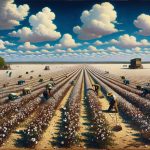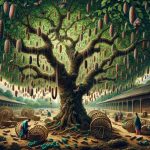Silk is primarily made in countries like China and India. These nations have rich traditions in silk production that span centuries. They've cultivated the art of silk weaving over time. If you're curious to learn more, there are significant players in silk manufacturing globally, as well as specific regions known for traditional silk production techniques.
Table of Contents
Key Takeaways
- China is the largest producer of silk globally.
- India has a significant role in silk production.
- Brazil, North Korea, Thailand, and Vietnam are also notable silk producers.
- Silk is primarily made in Asia, with China leading in volume.
- Skilled artisans in traditional regions weave silk fabrics with meticulous craftsmanship.
Countries With Rich Sericulture History
China has been the world's leading producer of silk for thousands of years, showcasing a rich sericulture history. Alongside China, countries like India, Brazil, North Korea, Thailand, and Vietnam have also made important contributions to the global silk industry with their unique sericulture traditions. India, known for its vibrant culture, boasts a long-standing tradition in silk production, adding diversity to the global market.
Brazil, with its notable history in sericulture, has played a vital role in the silk industry. North Korea, despite its closed-off nature, has a deep-rooted history in silk production, enriching the variety of silk sources available worldwide. Additionally, Thailand and Vietnam have made substantial contributions to the history of sericulture, further enhancing the global silk market.
These countries, each with its own distinct sericulture practices and traditions, collectively shape the multifaceted landscape of silk production globally.
Leading Global Silk Producers
Countries like India and Brazil, along with Uzbekistan and Thailand, play significant roles as leading global silk producers, contributing to the diverse landscape of the silk industry.
However, China stands out as the unrivaled champion in silk production, manufacturing a staggering 146,000 metric tonnes annually. Following closely behind, India emerges as the second-largest silk producer, boasting an output of 28,708 metric tonnes per year.
Uzbekistan and Thailand also make substantial contributions to the global silk market, adding to the rich tapestry of silk-producing nations. Notably, the United States and the European Union are major consumers of Chinese silk, solidifying China's position as the largest silk market globally.
It's evident that silk production is primarily concentrated in Asia, with China leading both in volume and market presence, shaping the dynamics of the silk industry on a global scale.
Traditional Silk Manufacturing Regions
Among the regions known for their traditional silk manufacturing expertise, generations have passed down the intricate art of silk weaving, fostering economic stability and cultural heritage. Traditional silk manufacturing regions such as China and India hold a special place in the history of silk production. The practice of sericulture and silk farming has sustained rural communities for centuries, providing livelihoods for millions. These regions are hubs of silk weaving, where skilled artisans create exquisite fabrics using techniques perfected over time. The economic stability brought by silk production hasn't only preserved ancient traditions but also empowered local populations. The legacy of silk manufacturing in these areas continues to thrive, playing an important role in the global silk industry.
- *China*: Known as the largest producer of silk globally, China's silk manufacturing regions boast a rich history of silk weaving and sericulture.
- *India*: With a tradition of silk production deeply rooted in its culture, India's silk manufacturing regions contribute significantly to the global silk market.
- *Other Major Producers*: Countries like Brazil, North Korea, Thailand, and Vietnam also have traditional silk manufacturing regions that play a crucial role in the industry.
Evolution of Silk Production Techniques
Exploring the evolution of silk production techniques reveals a fascinating journey of innovation and craftsmanship in the textile industry. Chinese looms, such as drawlooms and pedal looms, played a pivotal role in advancing silk production. These looms enabled the creation of intricate silk brocades and damasks dating back to the 2nd century BC. Byzantine silk further exemplified the high-quality weaving achieved through these techniques. Over time, technology advancements revolutionized silk production, enhancing efficiency and output. The introduction of water-powered mills greatly boosted production capabilities, marking a shift towards industrialization in the silk industry.
| Silk Production Techniques | Notable Features |
|---|---|
| Chinese Looms | Drawlooms and pedal looms |
| Silk Fabrics | Brocades and damasks |
| Byzantine Silk | Renowned for quality weaving |
| Technological Advancements | Water-powered mills |
The integration of these innovations not only elevated the quality and craftsmanship of silk products but also paved the way for increased production efficiency.
Quality and Craftsmanship in Silk Industry
I admire the intricate artistry that goes into silk production, emphasizing the importance of quality craftsmanship.
Skilled artisans contribute to the high standard of silk fabric through their meticulous attention to detail.
Quality control measures guarantee that every piece of silk meets rigorous standards, reflecting the industry's dedication to excellence.
Silk Production Techniques
Chinese looms, renowned for their quality, incorporated drawlooms and pedal looms, enabling intricate and precise silk weaving techniques. When it comes to silk production techniques, the process involves a meticulous approach that has been refined over centuries.
- Mulberry leaves are carefully cultivated to feed silkworms, ensuring the production of high-quality silk.
- Skilled artisans meticulously weave silk threads together, creating intricate and detailed silk fabrics.
- Traditional methods combined with modern technology enhance the efficiency and precision of silk production, maintaining the industry's reputation for excellence.
Artisanal Silk Weaving
Artisanal silk weaving showcases the epitome of quality and craftsmanship in the silk industry, embodying intricate handcrafted techniques passed down through generations. Skilled artisans meticulously create unique designs on silk fabrics using traditional methods, resulting in luxurious, high-end products. Attention to detail is crucial in the weaving process, ensuring the highest standards of craftsmanship are met.
Beyond creating exquisite textiles, artisanal silk weaving plays a critical role in preserving cultural heritage and supporting local communities by offering valuable employment opportunities. The art of silk weaving not only produces stunning pieces but also fosters a sense of pride and tradition among those involved in this intricate craft.
Silk Quality Standards
Ensuring silk meets specific criteria for purity, strength, and luster, quality standards play a pivotal role in the silk industry's commitment to excellence and craftsmanship. Craftsmanship in silk involves intricate weaving techniques and meticulous dyeing processes to create exquisite fabric.
Quality silk is evaluated based on factors like thread count, weight, smoothness, and color consistency. Certification from esteemed organizations such as Silk Mark in India or USDA in the United States signifies high-quality silk.
Skilled artisans with expertise in handling delicate silk threads and designing intricate patterns are essential in maintaining these quality standards. The attention to detail in both the weaving and dyeing processes contributes to the overall quality and appeal of silk products.
Significant Players in Silk Manufacturing
I'll start by highlighting some of the significant players in the silk manufacturing industry.
China holds the title of the world's largest silk producer, while India follows closely as the second-largest contributor.
Additionally, countries like Brazil, North Korea, Thailand, and Vietnam play notable roles in the global silk market.
Silk Production Locations
As the world's largest silk manufacturer, China produces an impressive 146,000 metric tonnes annually. When it comes to silk production locations, several countries play significant roles in the global market. These include:
- India, the second-largest silk producer after China.
- Uzbekistan, contributing to the diversity of silk sources.
- Thailand, known for its high-quality silk production.
Silk production is mainly concentrated in Asia, with China leading the industry both in production and consumption. The United States and the European Union are major consumers of silk products. The intricate process of silk manufacturing continues to thrive in these regions, showcasing the mastery and expertise of silk manufacturers worldwide.
Leading Silk Producers
Among the leading silk producers globally, China stands out as the foremost contributor, accounting for approximately 66% of the world's silk production. Following China, India emerges as the second-largest silk producer, playing a significant role in the global silk market.
These countries, along with Brazil, North Korea, Thailand, and Vietnam, contribute to the rich tapestry of silk-producing nations. The economic impact of silk production is profound, supporting about 34 million individuals worldwide and holding particular importance in rural communities.
Additionally, these top silk-producing countries boast a heritage steeped in silk weaving traditions that have been handed down through generations, adding cultural significance to their position as key silk producers.
Global Silk Industry
The global silk industry thrives with significant players in silk manufacturing, with China leading as the world's largest silk manufacturer. Concerning silk production, China dominates the market, producing a staggering 146,000 metric tonnes of silk annually.
Following closely behind, India emerges as the second-largest producer with an annual output of 28,708 metric tonnes. Alongside these giants, Uzbekistan and Thailand also play key roles in the global silk production industry.
It's worth noting that the silk market is heavily concentrated in Asia, with China spearheading the industry. The United States and the European Union stand out as major consumers of silk products, highlighting the industry's global reach and significance.
Global Silk Production Centers
Silk production thrives in various countries worldwide, with China leading as the largest producer, followed closely by India and other significant contributors like Brazil, North Korea, Thailand, and Vietnam. China stands out as the powerhouse in silk farming, producing over 66% of the world's silk. India follows suit as the second-largest silk producer, making substantial contributions to the global silk market.
These nations boast a rich heritage of weaving skills that have been passed down through generations, ensuring the quality and authenticity of their silk products. The economic impact of these silk-producing countries is undeniable, with their collective efforts playing a pivotal role in sustaining the global silk industry.
Brazil, North Korea, Thailand, and Vietnam also hold significant positions as key silk production centers, further diversifying the market and adding to the cultural tapestry of silk production worldwide.
Frequently Asked Questions
Where Is Silk Produced in the World?
Silk is produced globally, with China being the largest producer. India also plays a significant role in silk production. Other major silk-producing countries include Brazil, North Korea, Thailand, and Vietnam. This industry supports millions of people worldwide.
Where Is Real Silk Made?
Real silk is primarily made in countries like China, India, Brazil, North Korea, Thailand, and Vietnam. China, the largest producer globally, has a rich history in silk production. The process involves rearing silkworms and harvesting silk threads from cocoons.
Is There Any Silk Made in the Usa?
Yes, there is silk made in the USA. While not a major global producer, American silk production thrives in small-scale operations across states like California, Texas, and Oregon, catering to niche markets with a focus on quality and sustainability.
Which Country Makes the Best Silk?
When it comes to silk production, China excels, renowned for its superior quality and centuries-old expertise in sericulture. The country sets the global standard for silk, with a reputation for excellence and authenticity.
- Innovations in Moisture-Wicking Textiles - July 18, 2024
- Engineering Fabrics for Optimal Performance - July 18, 2024
- The Science of Breathability in Fabrics - July 18, 2024








